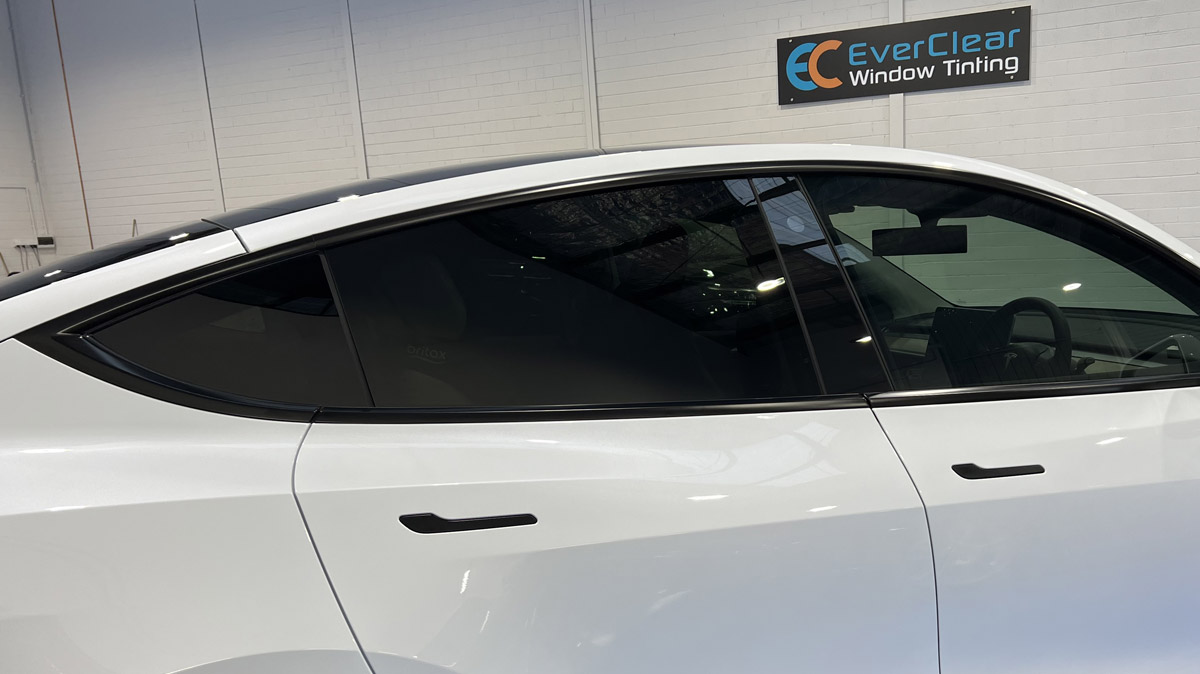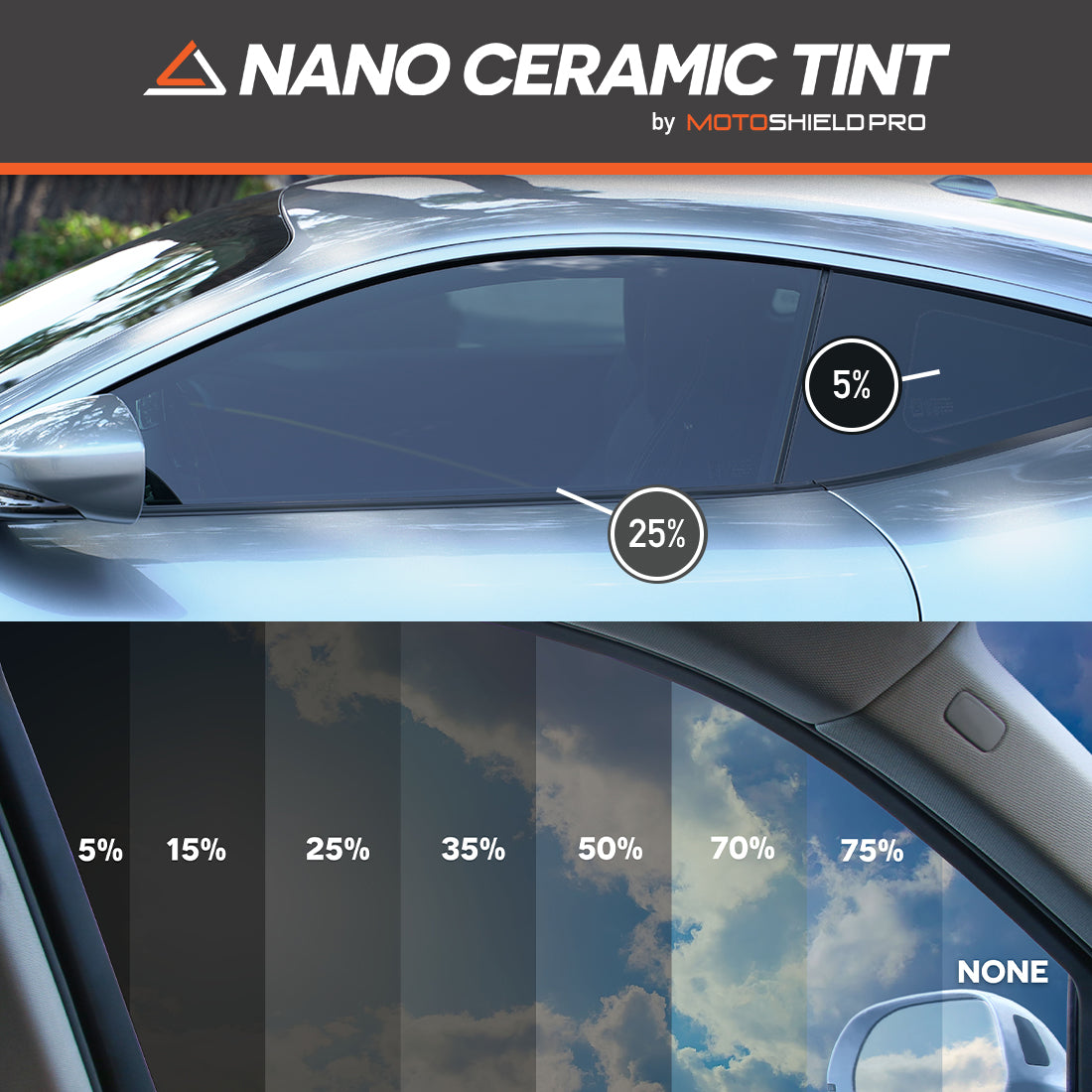Cost of Window Tinting: What Elements Affect the Price and How to Save
Wiki Article
Window Tinting Options: Find the Right Shade for Your Design and Demands
Picking the appropriate window tint for your automobile involves a careful factor to consider of different variables, including personal looks, functional demands, and legal constraints. With alternatives ranging from light tintss that offer minimal privacy to darker tones that improve privacy, the selections can be overwhelming.Recognizing Window Tinting Degrees
When taking into consideration window tinting, it is vital to recognize the numerous degrees of tint available, as they dramatically affect both visual appeals and performance. Window tinting is categorized based upon Visible Light Transmission (VLT) percentages, which indicate the amount of light permitted to go through the glass. The VLT percentage can range from really light (over 70%) to really dark (below 5%)The main levels of tint include clear, which provides UV defense without altering visibility; light tint (over 50% VLT), which slightly minimizes glow while maintaining presence; medium tint (around 35% VLT), striking an equilibrium between personal privacy and light transmission; and dark tint (listed below 20% VLT), providing considerable privacy and warmth reduction but limiting external exposure.
Comprehending these degrees is vital as they can impact driving security, legal conformity, and individual comfort. Furthermore, regional laws usually dictate allowable tint degrees, differing by state or municipality. Consequently, before picking a color, it is suggested to research and guarantee adherence to these policies while taking into consideration personal preferences for design and useful benefits.
Popular Tint Tone Explained

One of one of the most prominent options is the timeless dark tint, typically ranging from 20% to 5% VLT (Noticeable Light Transmission) This shade provides maximum privacy and a smooth, sophisticated appearance. It effectively blocks UV rays and warmth, making it perfect for warm environments, though it may limit visibility at evening.
Alternatively, lighter shades such as 35% or 50% VLT supply an extra subtle appearance while still using some level of personal privacy. These shades are ideal for those looking for an equilibrium in between aesthetic appeals and capability, as they enable better exposure and follow numerous lawful standards.
Another emerging preference is the ceramic tint, which can can be found in a variety of tones - window tinting. It offers superior heat being rejected and UV security without dramatically modifying the vehicle's appearance

Lawful Laws for Window Tinting
Comprehending the lawful policies bordering window tinting is crucial for vehicle proprietors looking to customize their cars. Each state in the united state has specific legislations controling the darkness or lightness of window tintss, frequently gauged by Visible Light Transmission (VLT) percentage. VLT refers to the quantity of light that can pass through the movie and the glass combined.In lots of states, laws dictate different VLT percents for various windowss, including front windscreens, side windowss, and back windowss. As an example, some states may enable a color of 70% VLT for windscreens while permitting darker tintss for back windowss. Furthermore, specific states have constraints on reflective tintss, which can develop glare for other chauffeurs.
Failing to abide with these regulations can lead to fines, mandated removal of the tint, and boosted insurance policy premiums. Automobile proprietors must get in touch with local laws or state DMV sites to ensure they are within legal limitations before proceeding with setup. Comprehending these guidelines not only helps avoid legal repercussions but also ensures a safe driving experience.
Benefits of Various Tint Products
Checking out the benefits of different tint materials reveals significant advantages that can boost both the capability and visual charm of an automobile. Each material provides distinct characteristics matched to details requirements and preferences.Dyeded window films are popular for their price and capacity to minimize glare. They effectively obstruct UV rays, securing the interior from fading, though they may not give the greatest heat rejection. Metalized films, on the other hand, offer premium warm reduction and UV defense because of their reflective properties. They can boost privacy and security yet may interfere with electronic signals.
Ceramic window films stand for a premium alternative, supplying phenomenal heat rejection while keeping exposure. They are non-metallic, thus staying clear of any signal interruption, and are very sturdy, withstanding scrapes and fading gradually. Additionally, ceramic films do not include dyes, making certain a longer-lasting appearance.
Finally, crossbreed films integrate elements from dyeded and metalized alternatives, offering a balanced efficiency in regards to heat denial, glow reduction, and expense. Each tint product offers special purposes, enabling automobile proprietors to choose the finest suitable for their lifestyle and aesthetic preferences, inevitably boosting their driving experience.
Choosing the Right Tint for You
Finding the right window tint entails considering different aspects, consisting of individual preferences, vehicle type, and regional guidelines. check this Assess your personal style and preferred level of privacy, as these will direct your option of tint shade. Darker tintss provide enhanced privacy but may not appropriate for all chauffeurs, especially those who like a more open feel inside their car.Next, consider your automobile kind, as the shapes and size of windowss can affect the effectiveness of certain tintss. right here Larger windowss might benefit from reflective tintss that reduce glare while smaller sized windowss could be much more matched to dyeded films that supply subtle aesthetics.
Additionally, it's critical to check regional laws regarding window tinting. Numerous states enforce constraints on the allowable darkness and reflectivity, particularly for front windowss. Conformity with these laws is necessary to make sure and avoid penalties safety.
Last but not least, assess the tint material that ideal suits your requirements. Options include dyeded, metalized, ceramic, and hybrid films, each offering unique advantages associating with warmth rejection, UV defense, and sturdiness. By taking into consideration these elements, you can with confidence choose a home window tint that aligns with your design and useful requirements.
Final Thought
In verdict, choosing the ideal window tint needs mindful consideration of different variables, including VLT portions, regional laws, and the desired aesthetic. Various tint products offer distinct benefits that can improve lorry convenience and protection. By visit our website completely comprehending the readily available options and aligning them with private preferences and functional demands, one can accomplish an ideal balance between style and capability in window tinting choices.Selecting the suitable window tint for your car includes a cautious factor to consider of different aspects, consisting of individual appearances, functional requirements, and legal restrictions. Each state in the U.S. has specific laws controling the darkness or agility of window tintss, commonly gauged by Visible Light Transmission (VLT) portion. Some states might enable a tint of 70% VLT for windshields while allowing darker tintss for rear windowss.Discovering the right window tint entails considering numerous variables, consisting of personal preferences, vehicle kind, and regional policies.In final thought, selecting the appropriate window tint requires mindful factor to consider of different elements, including VLT percents, regional policies, and the desired visual.
Report this wiki page